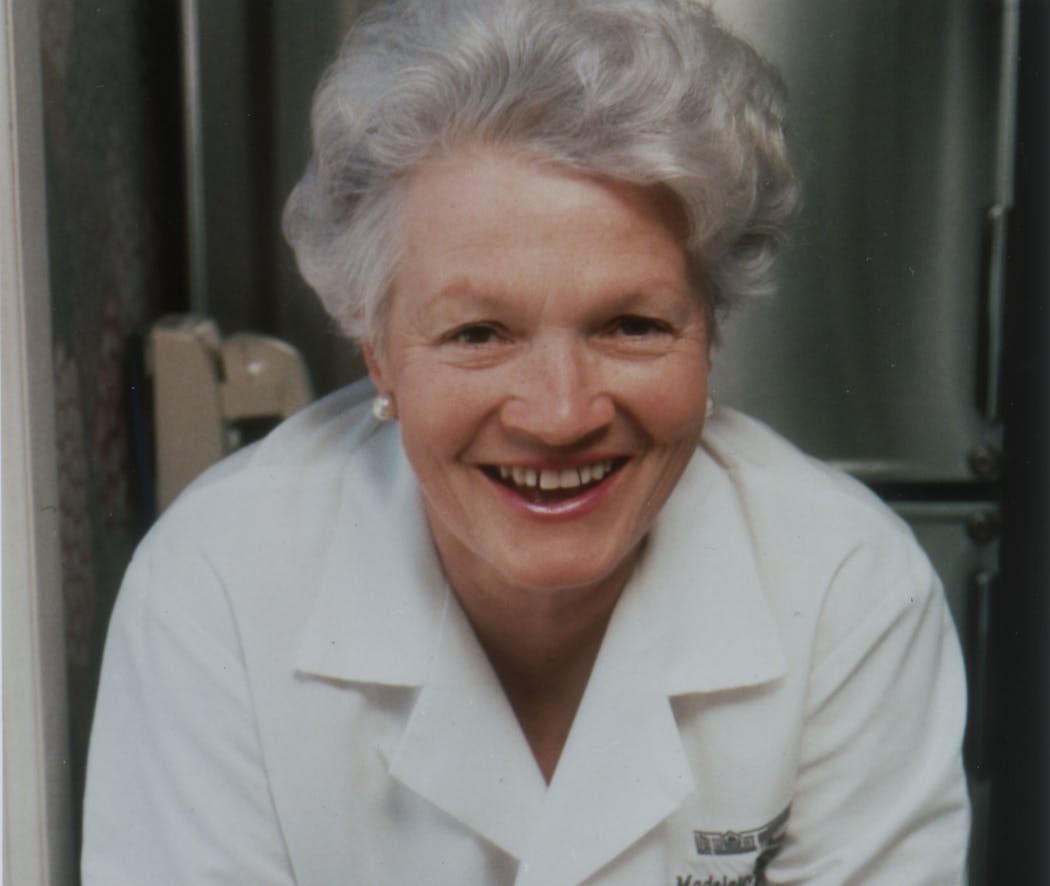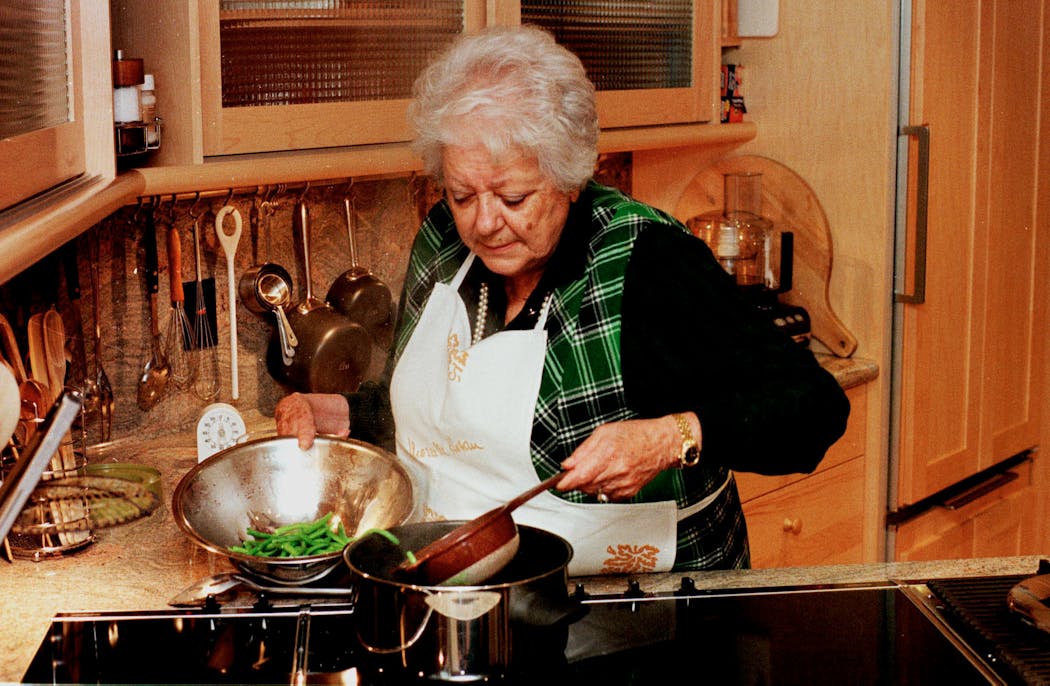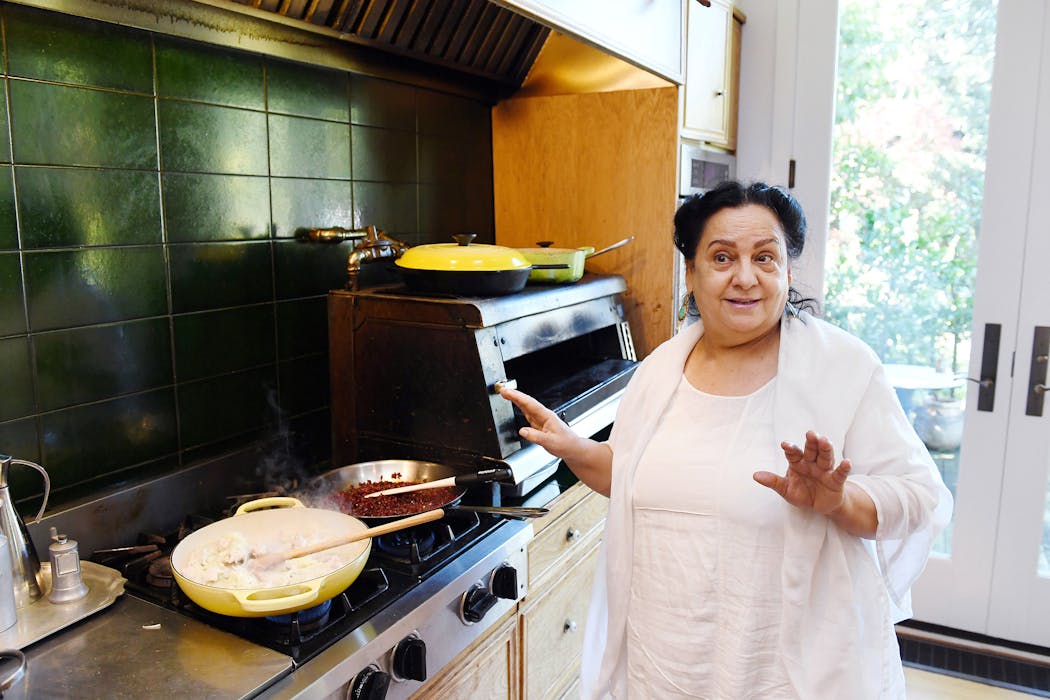Let's set aside Julia Child for a moment. Can you identify other women who have made culinary history in the U.S.? No fair googling the answer.
Now let's pump up the challenge. Name some immigrant women who have shaped our meals.
Mayukh Sen can help. His first book, "Taste Makers: Seven Immigrant Women Who Revolutionized Food in America" (W.W. Norton & Co., $26.95), is the culmination of those not-so-simple-as-they-sound questions as he researched the overlooked or forgotten cooks and restaurateurs who have influenced the way Americans eat.
Sen, 29, is a relative newcomer to food writing. But that hasn't slowed down this Stanford grad, a James Beard award winner, with his sensitive and insightful profiles of those who didn't make the history books. We spoke with him about food as an occupation for immigrants, the concept of the "melting pot" and the nature of authenticity. Sen is the son of immigrant parents from India. This interview was edited for brevity.
Q: I like to think I am familiar with food history, but you had surprises for me, and that's a real treat. How did you come up with these particular seven women?
A: I knew early on that I wanted to include a mix of more well-known names like, for example, Marcella Hazan, who many readers might know as the doyenne of Italian cooking, alongside the names of figures who may not be as famous as their body of work merits. The reason why I wanted to do that, to provide that mix, was to provide an easy entry point to readers who might have a passing interest in the culinary world in some capacity.
Q: What brought you to focus on the more-or-less forgotten cooks of history?
A: I came to food writing by total accident five years ago. When I was 24, I was hired to be a staff writer at a [online] site called Food52. The reason why I got offered that job was because they were reportedly looking for someone who was not necessarily a cook or interested in restaurants — basically not a "food person" — but who could maybe write engagingly about food as it relates to culture.
I had been working as a freelancer writing about film and television and music — because I grew up wanting to be a film critic, right? I got offered this job and I thought, "Oh, this sounds fun and interesting and maybe I'll do it." I never considered food writing as a viable career path because I always thought of it as the domain of white, straight men and I was so not that in so many ways. Regardless, I took the job with some trepidation. But what I really wanted, aside from a full-time culture writing role with salary and benefits, was the trust of an editor to write stories that were more deeply reported and longer than the "hot takes" I'd been paid 250 bucks to write.
Q: Why did the women you've chosen turn to food as their outlet?
A: It satisfied some immediate financial need. They truly needed a job, needed a way to make a living in this new country that was so unfamiliar to them, so they began to harness the skill and make a career out of it. And they were able to do so in America in a way that they may not have been able to do at home. I think what binds the stories of all these women, more or less, is cooking always played some significant role in their lives from youth. And perhaps they did not understand that it was a viable career path growing up. Coming to America allowed them to understand that these creative impulses could be a way to make a living, whether or not they were successful in making that happen in America.
Q: We often hear that America is a melting pot. How do you look at it through your lens?
A: The concept of America being a melting pot holds a lot of truth for a lot of people. I understand that many people will pick this up and say, "I really want to know how America became this place where you can get saag paneer on one block and on the next block you can get great enchiladas." It's a truly wonderful melting pot in that respect.
But I wanted to complicate that a little bit by showing the struggle that's involved in making that happen. I think the best way to write against these frustrating tropes that I've observed is to tell the stories of individual immigrants from the ground up, in the most granular way possible and that really does honor the struggle that's involved in this consumer wonderland that so many people try to paint America's culinary landscape.
Q: Another view today is that there's authentic immigrant food and there's Americanized immigrant food. It results in rather polarized views of food.
A: I think that authenticity is a very loaded word in culinary terms. Some of these women in the book, as their careers progressed, they did not want to hue to tradition in any way. Rather, they wanted to express their individual tastes through their food. I think the primary example that comes to mind is that of Elena Zelayeta, who is the subject of my second chapter. She was from Mexico and started out writing almost exclusively in Mexican and Spanish cookbooks. But as her career progressed, she became more interested in California foods in general and borrowed influences from her adoptive home. I think my desire was to not judge that impulse in any way because it is so easy and so tempting, especially removed from history, to look down on that Americanizing impulse. But that does a disservice to someone's individual creative vision and their passions. I hope that I've honored those seemingly competing visions of food.
7 influential women you should know about
Mayukh Sen writes about these women, each from a different country, in "Taste Makers: Seven Immigrant Women Who Revolutionized Food in America." All introduced or popularized flavors and foods for Americans.
Chinese: Chao Yang Buwei (1889-1981)
"How to Cook and Eat in Chinese" (1945) was the first comprehensive multi-regional Chinese cookbook in the U.S. It introduced the word — and concept — of "stir-frying" to Americans and received high praise from critics. She went on to write two more related books.
Mexican: Elena Zelayeta (1897-1974)
"Elena's Famous Mexican and Spanish Recipes" (1944) served as a rare cookbook from a Mexican author that appealed to both white Americans and Mexican immigrants. Zelayeta's multifaceted culinary life included starting a restaurant and, despite being blind, working as a culinary teacher, TV cooking host, frozen food entrepreneur (based on her own recipes), restaurant consultant, as well as author of five more books.
French: Madeleine Kamman (1930-2018)
The first of Kamman's books was "The Making of a Cook," which focused on technique as much as recipes, and was published in 1971. She ran a cooking school, wrote seven more books and became a restaurant owner, as well as appearing on a public television series and on TV talk shows.
Italian: Marcella Hazan (1924-2013)
"The Classic Italian Cookbook" (1973) made a significant impact on mealtime for Americans. Hazan continued with seven more cookbooks and ran a cooking school.
Indian: Julie Sahni (1945-present)
"Classic Indian Cooking" (1980) was considered an essential guide to Indian food. She has written six other cookbooks and articles for food publications, and appeared on some food-related TV productions. She also served as executive chef at two fine dining New York restaurants.
Iranian: Najmieh Batmanglij (1947-present)
Batmanglij formed a successful publishing company with her husband to publish "Food of Life: A Book of Ancient Persian and Modern Iranian Cooking and Ceremonies" (1986), prompted by disinterest from other companies related to the timing of this book (around when American hostages had been held by Iran). She has written eight additional cookbooks, all published by her own company.
Jamaican: Norma Shirley (1938-2010)
Shirley was a food stylist, caterer and managed a restaurant in New York before returning to Jamaica to open several restaurants. American critics and food magazines noted her food in Jamaica and credit her with making the food less working-class and more high-end, and broadening interest in it. Though she wrote no cookbooks, her recipes appeared in other compilations, and she appeared on two TV food series.
Lee Svitak Dean is a former editor at the Star Tribune.
Marcella Hazan's Bolognese Sauce
Makes 2 heaping cups, enough for about 6 servings.
Note: This takes at least four hours to prepare. From "The Essentials of Classic Italian Cuisine." Adapted by the New York Times.
• 1 tbsp. vegetable oil
• 3 tbsp. butter, plus 1 tbsp. for tossing the pasta
• 1/2 c. chopped onion
• 2/3 c. chopped celery
• 2/3 c. chopped carrot
• 3/4 lb. ground beef chuck (or use 1 part pork to 2 parts beef)
• Salt
• Black pepper, ground fresh from the mill
• 1 c. whole milk
• Whole nutmeg
• 1 c. dry white wine
• 1 1/ 2 c. canned imported Italian plum tomatoes, cut up, with their juices
• 1 1/ 4 to 1 1/ 2 lb. pasta
• Freshly grated Parmigiano-Reggiano cheese, for serving
Directions
Put the oil, butter and chopped onion in the pot and turn the heat on to medium. Cook and stir the onion until it has become translucent, then add the chopped celery and carrot. Cook for about 2 minutes, stirring vegetables to coat them well.
Add ground beef, a large pinch of salt and a few grindings of pepper. Crumble the meat with a fork, stir well and cook until the beef has lost its raw, red color.
Add milk and let it simmer gently, stirring frequently, until it has bubbled away completely. Add a tiny grating — about 1/8 teaspoon — of nutmeg, and stir.
Add the wine, let it simmer until it has evaporated, then add the tomatoes and stir thoroughly to coat all ingredients well. When the tomatoes begin to bubble, turn the heat down so that the sauce cooks at the laziest of simmers, with just an intermittent bubble breaking through the surface. Cook, uncovered, for 3 hours or more, stirring from time to time.
While the sauce is cooking, you are likely to find that it begins to dry out and the fat separates from the meat. To keep it from sticking, add 1/ 2 cup of water whenever necessary. At the end, however, no water at all must be left and the fat must separate from the sauce. Taste and correct for salt.
Toss with cooked drained pasta, adding the tablespoon of butter, and serve with freshly grated Parmesan on the side.
Judge declines to dismiss lawsuits filed against rapper Travis Scott over deadly Astroworld concert

Summer Movie Guide: Virtually all the movies coming to theaters and streaming from May to Labor Day





